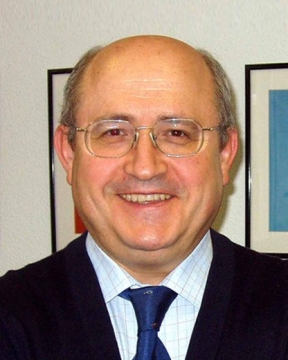 |
Tomas TorresU. Autonoma de MadridSubphthalocyanines: A New Class Of Nanomaterials Echegoyen International Symposium (8th Intl. Symp. on Synthesis & Properties of Nanomaterials for Future Energy Demands) Back to Plenary Lectures » |
Abstract:Subphthalocyanines (SubPcs) are well-known cone-shaped chromophores consisting of three 1,3-diiminoisoindole units assembled around a boron atom [1,2,3]. As a result of their 14 pi-electron aromatic core and their tetrahedral geometry, SubPcs exhibit outstanding physical and optoelectronic properties (e.g., strong dipole moment, excellent light absorption in the 550-650 nm, rich redox features, and excellent charge transport capabilities), that have been skillfully used in variety of applied fields, such as molecular photovoltaics, among others. SubPcs were used by us as non-fullerene acceptors in bulk heterojunctions (BHJ) solar cells. On the other hand as part of our systematic investigation in the preparation and study of novel SubPc-based D–A systems, we have used 1,1,4,4-tetracyanobuta-1,3-diene (TCBD) as partner for SubPcs. Moreover, in the case of unsymmetrically substituted SubPcs (i.e., prepared by cyclotrimerization of a phthalonitrile with no C2v symmetry), they present inherent chirality and the corresponding couple of enantiomers can be isolated. Columnar aggregates based on chiral SubPcs have been also prepared, giving rise to ferroelectric self-assembled molecular materials showing both rectifying and switchable conductivity. These chromophores have been incorporated in multicomponent systems showing a panchromatic response and allowing the tuning and controlling intramolecular FÖRSTER Resonance Energy Transfer for Singlet Fission |
|